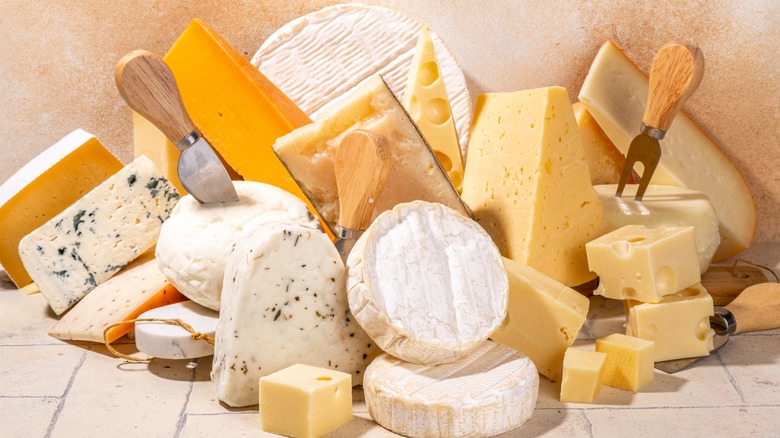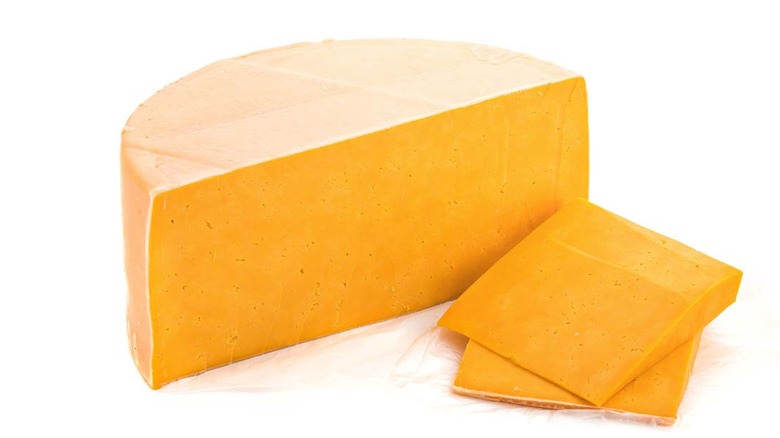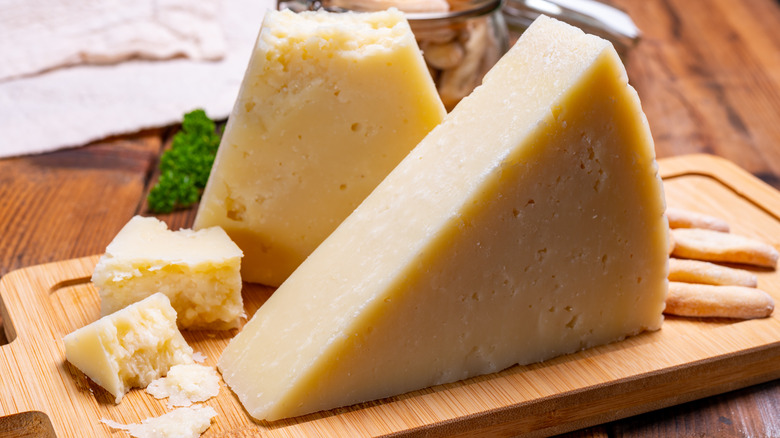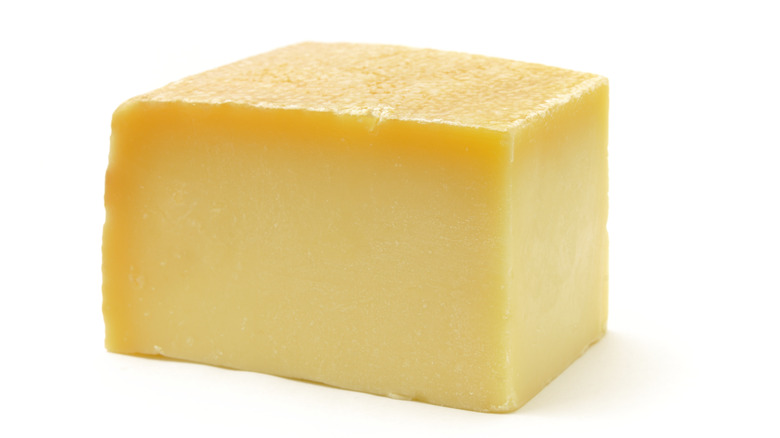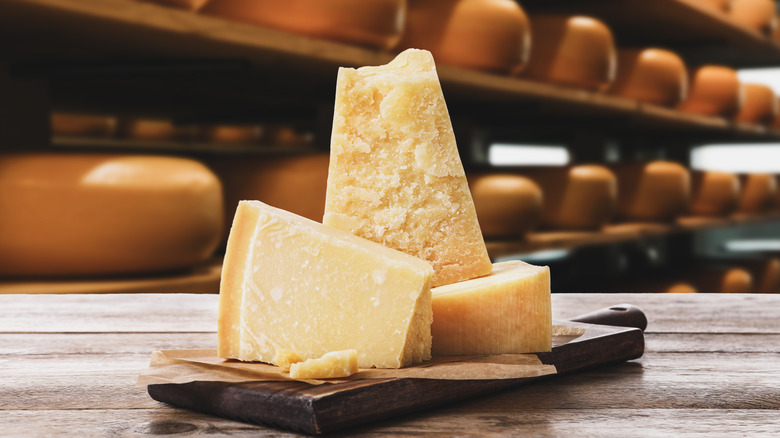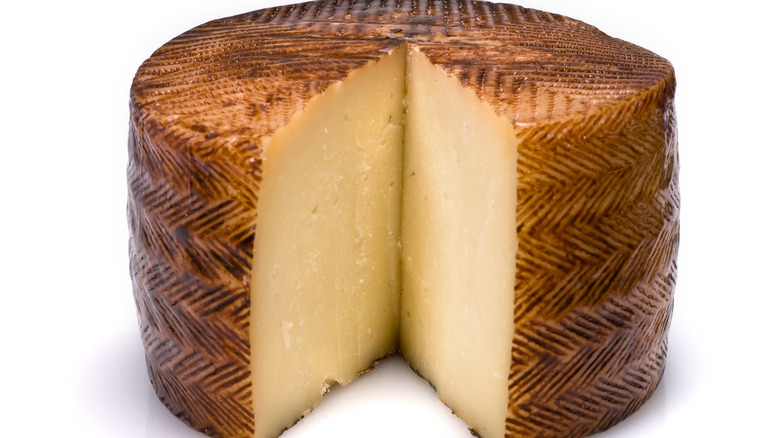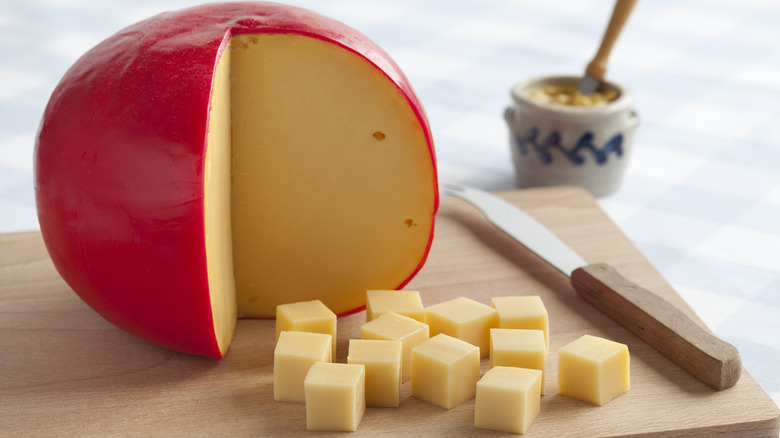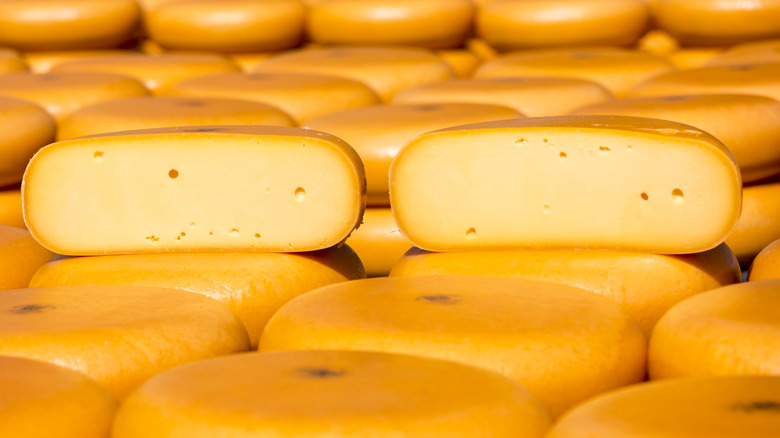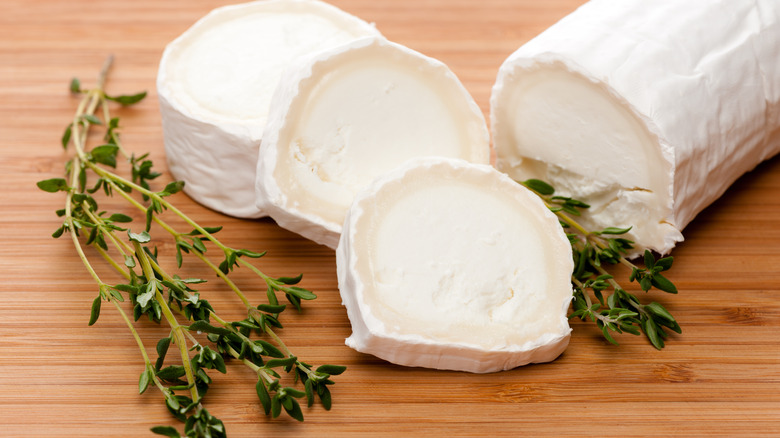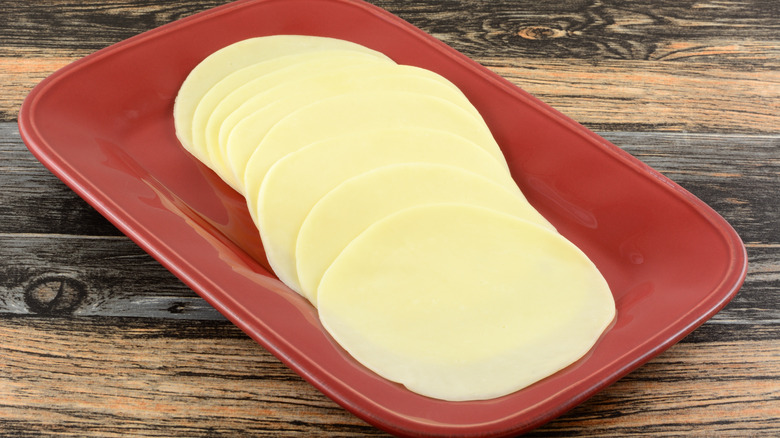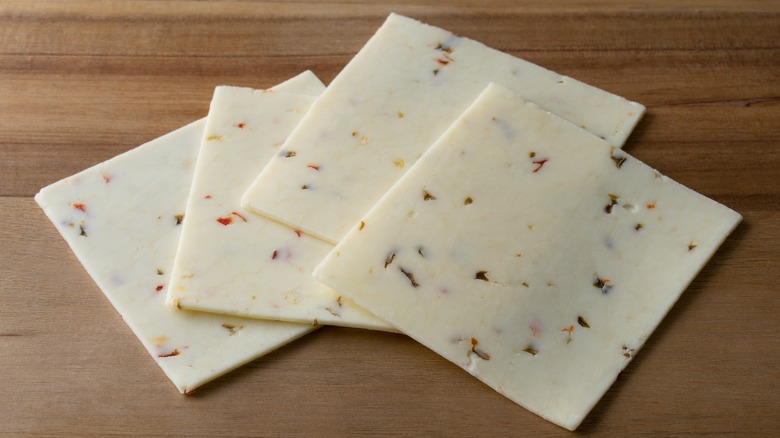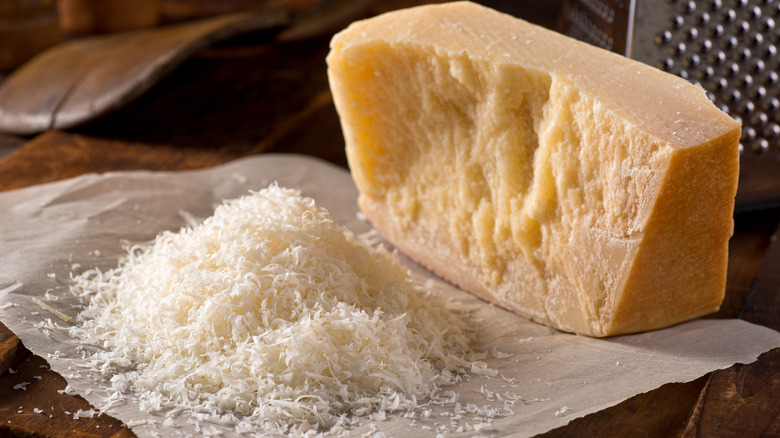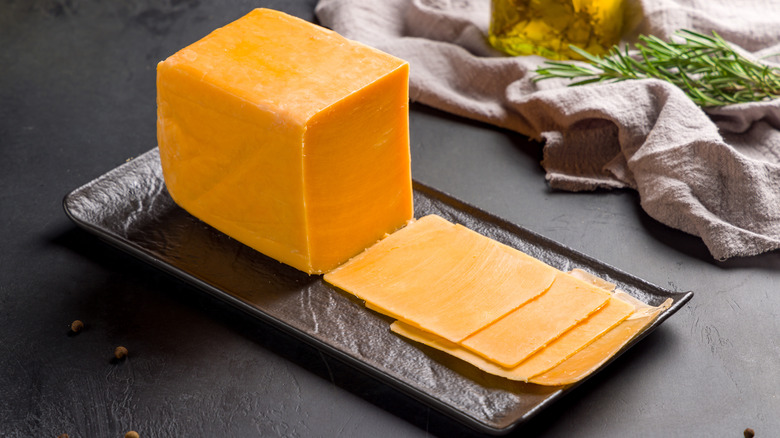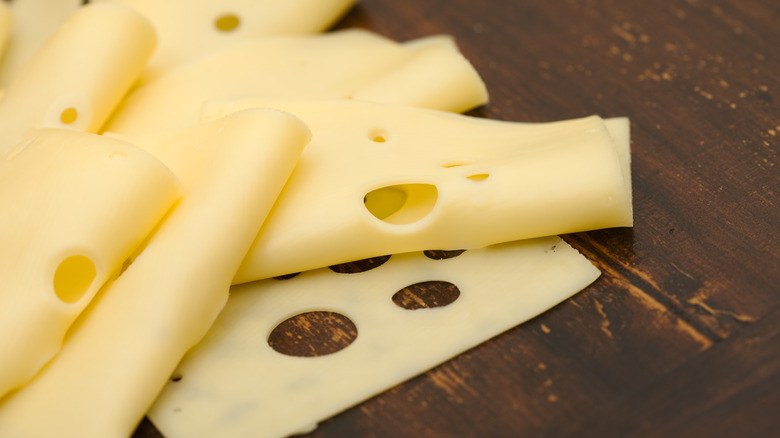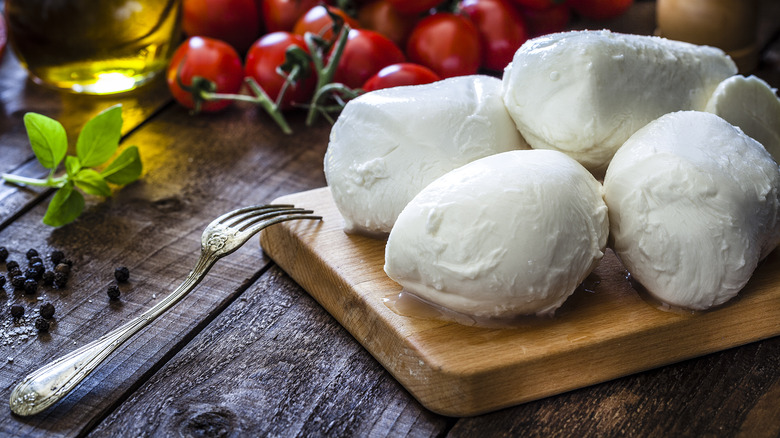Unique Cheeses That Have More Protein Than Meat
Protein, the fundamental building block of life, is not just a dietary component. As a study published in the Journal of Sports Science and Medicine explains, it is an essential nutrient crucial for the body's growth, repair, and overall function, as it is also needed to produce hormones, enzymes, and red blood cells. Often, when thinking of protein, visions of meaty steaks and sizzling burgers come to mind. However, a hidden contender in the protein arena might surprise you: cheese.
Beyond its delightful taste and diverse textures, cheese boasts a secret power: Some varieties contain more high-quality protein than meat. But how does this dairy delight match the protein content found in ground beef, a staple in many diets? The answer lies in the intricate processes that cheese undergoes during its transformation from milk to delectable wedges. According to the Encyclopedia Britannica, the process of making cheese entails taking most of the water out of fresh milk while keeping the solid parts. These solids are also known as the curd, which are clumps of milk's protein casein, and depending on the type of cheese, the curd may pack more protein per ounce compared to the five grams of protein provided by the same amount of ground beef (via the USDA Food Data Central). Moreover, since cheese's protein comes directly from milk's protein content, it is not only considered a protein-dense dairy food but one that provides all essential amino acids, making it a high-quality protein as well, according to the previous study.
In this article, we delve deep into the world of cheeses to tell you which ones provide more protein than meat.
Pinconning cheese
Originating from the town of Pinconning, Michigan, Pinconning cheese is an aged semi-hard cheese crafted from pasteurized cow's milk and styled after Colby cheese (via Cheese.com). You can find a range of Piconning cheeses that differ from one another in texture depending on the length of their aging process. As it ages, the cheese's hardness intensifies and its texture evolves, leading to an increase in sharpness while maintaining its rich and creamy essence.
For those mindful of their protein intake, Pinconning cheese can be a helpful dietary ally by providing 7 grams of protein per ounce (via the USDA Food Data Central) or 2 more grams of the nutrient compared to the same serving of ground beef. Beyond its remarkable protein content, Pinconning cheese offers health-conscious consumers a couple of extra benefits. The cheese is an all-natural product that's also gluten-free and sourced from grass-fed cows, catering to dietary preferences and ensuring a wholesome experience for everyone (via Pinconningcheese.com). What's more, this cheese is free from recombinant bovine growth hormone (rBGH) and antibiotics, reflecting a commitment to quality and natural goodness.
In addition, Pinconning cheese stands out due to its culinary versatility, as it finds a place in the kitchen as a delightful replacement for cheddar and Colby cheeses in various dishes. So, whether you savor it on its own or incorporate it into your favorite recipes, Pinconning cheese promises a delightful, high-protein, and health-conscious indulgence.
Romano cheese
Romano cheese is an Italian hard cheese with a grainy texture and a hard, brittle rind made from pasteurized or non-pasteurized cow's, sheep's, or goat's milk. Depending on the milk used, the cheese is called Vaccino (cow's milk), Pecorino (sheep's milk), or Caprino (goat's milk) Romano (via Cheese.com), and both its flavor and nutritional qualities may vary based on the milk composition and the aging process.
Unlike ground beef, which offers 5 grams of protein per ounce, Romano cheese boasts a remarkable 7 grams of protein per ounce, making it a vegetarian protein alternative for those seeking a high-protein diet (per the USDA Food Data Central). Plus, Romano cheese offers potential health benefits. For instance, according to Progressive Grocer, a six-year-long research study highlighted that Pecorino Romano, made from sheep's milk, contains high amounts of CLA (conjugated linoleic acid), an omega-6 polyunsaturated fatty acid known for its health benefits, which have been linked to reducing the risk of type 2 diabetes, heart disease, and cancer (via Healthline). This makes Romano cheese not just a delicious addition to meals, but also a nutritious one.
Romano cheese's unique nutritional and therapeutic properties are attributed to the high CLA content in the milk of grass-fed sheep, underscoring the significance of grazing grass for cheesemaking. When it comes to the cheese's culinary uses, its mild yet tangy flavor makes it a delightful table cheese that you can grate over pasta, soups, and salads or shave onto cooked dishes and cream sauces.
Gruyère cheese
This hard cow's milk cheese, originating from the picturesque town of Gruyère in Switzerland, is a protein powerhouse, containing an impressive 9 grams of protein per ounce (per the USDA Food Data Central). Its rich, nutty taste makes it a favorite among cheese enthusiasts and chefs alike, which is evidenced by its diverse culinary applications, as the cheese finds its way into steaming pots of soups and fondues, enriching them with its creamy goodness, as well as in classical French dishes like cordon bleu and quiche, elevating their flavors to perfection (per the Encyclopedia Britannica).
One of Gruyère's unique distinctions lies in its protected status. Le Gruyère AOP has been granted the prestigious "Appellation d'Origine Protégée," ensuring that the name Gruyère is reserved exclusively for cheese crafted in the town of Gruyère, Switzerland, and produced according to the same traditional recipe since 1115. Thus, it's safe to say that Gruyère cheese embodies centuries of expertise and craftsmanship. Moreover, the cheese-making process adheres strictly to AOP specifications, prohibiting the use of additives, preservatives, pasteurization, or growth hormones, guaranteeing a pure and natural product.
Finally, Gruyère's health benefits extend beyond the previous specifications. According to Nutrition Advance, being produced from the milk of grass-fed cows, this cheese contains slightly higher levels of omega-3 fatty acids compared to other cheeses. Moreover, Gruyère is exceptionally rich in calcium, vital for bone and teeth structure, as well as essential for muscle function and nerve communication within the body (via the National Institutes of Health).
Grana Padano cheese
Grana Padano cheese, a revered Italian treasure, is both a culinary delight and a gem for health-conscious enthusiasts. Crafted from unpasteurized, semi-skimmed cow's milk, this cheese undergoes a meticulous aging process, maturing gracefully over two years, resulting in an intensely sweet-ish flavor. Moreover, Grana Padano has been granted PDO (Protected Designation of Origin) status, a prestigious certification that guarantees its production adheres to specific guidelines within a designated geographical area (via Cheese.com). Its name, "Grana," meaning "grainy" in Italian, aptly describes texture, which creates a sensory experience that lingers on the palate.
But what sets Grana Padano apart is its remarkable protein content, boasting an impressive 9 grams per ounce, placing it among the cheeses with the highest protein content per ounce (via the USDA Food Data Central). Nevertheless, the wonders of Grana Padano extend beyond its protein content, as it is also believed to have potential health benefits. According to Vice, researchers from esteemed institutions have explored its effects on blood pressure with intriguing findings, reporting that Grana Padano showcases high levels of angiotensin-converting enzyme (ACE) inhibitor activity, meaning that it can mimic the effects of blood pressure medications like Lotensin and Capoten. This unique property suggests that Grana Padano might be able to lower blood pressure, potentially offering a natural alternative to pharmaceutical interventions. Whether grated over pasta, enjoyed in salads, or savored on its own, Grana Padano continues to enchant taste buds while potentially contributing to a healthier lifestyle, making it a true marvel in the world of cheese.
Manchego cheese
Manchego cheese, crafted from pasteurized sheep's milk in the La Mancha region of Spain, is a true embodiment of rich tradition and exquisite taste that, by offering 7 grams of protein per ounce, also surpasses meat in protein content (via the USDA Food Data Central). What sets Manchego apart is the diversity of its flavor profile, as it is available in a range of varieties that cater to multiple tastes and preferences. From the fresh and mild Fresco, aged for a mere two weeks, to the Semi Curado, maturing for up to three months, the robust Curado, aged for six months, and the intense Viejo, matured for up to two years, Manchego's nutty flavor evolves from mild to sharp and peppery, reflecting its aging process. Additionally, Manchego cheese falls under the PDO guidelines, ensuring adherence to the highest standards of production and quality (via Cheese.com).
Manchego cheese's intense flavor and crumbly texture make it a perfect table cheese, offering a gastronomic experience that lingers on the taste buds. Its exquisite taste is further accentuated when paired with sides like olives, sun-dried tomatoes, and crusty bread, creating a harmonious symphony of flavors (via BBC Good Food).
Edam cheese
Originating from Edam in the Netherlands, Edam cheese is a culinary gem celebrated for its unique characteristics and versatile uses. It is made from pasteurized cow or goat milk, and you may recognize it from its pale yellow interior and characteristic red paraffin wax covering. Edam cheese delights with its mild, salty, and nutty flavor profile in its early stages, which gradually intensifies as it ages (via Cheese.com).
Apart from its exceptional taste, Edam cheese presents consumers with a couple of nutritional benefits. This cheese not only boasts a protein content of 7 grams per ounce, but with just 8 grams of fat in the same serving, it stands as a comparatively low-fat option in the world of cheeses, catering to those mindful of their fat intake (per the USDA Food Data Central). Regarding its uses, culinary enthusiasts find endless creative possibilities with Edam cheese. According to Cheese.com, when fresh, it is often combined with the natural sweetness of fruits like peaches, apricots, cherries, and melons. Yet, as it ages, Edam cheese pairs perfectly with the crisp texture of pears and apples, enhancing the flavors of both the cheese and the fruits. Moreover, Edam cheese is a charcuterie staple, elegantly adorning platters alongside crackers and biscuits, providing a perfect balance of flavors and textures.
Gouda cheese
Gouda cheese, originating from the town of Gouda in Southern Holland, stands as a testament to Dutch cheese-making expertise. Named after its place of origin, Gouda cheese provides not only a delightful taste experience but also nutritional benefits, offering 7 grams of protein per ounce (per the USDA Food Data Central). In addition, Gouda cheese serves as an excellent source of essential nutrients. According to Nutrition Advance, the cheese is abundant in calcium, vital for strong bones and teeth, and boasts vitamin K2, essential for cardiovascular health. Furthermore, Gouda cheese contains omega-3 fatty acids, crucial for heart health, and vitamin A, which supports vision and immune function. These nutrients collectively make Gouda not just a delicious treat but also a nourishing addition to one's diet.
Culinary enthusiasts celebrate Gouda's diverse applications. Mild Gouda adds a creamy texture and subtle flavor to cheese platters, fondue, omelets, salads, and sandwiches. In contrast, Gouda's robust flavors pair exceptionally well with red wine or ale as it ages, creating a blend of tastes that lingers on the palate. In short, Gouda cheese embodies the perfect balance between flavor and nutrition. Its versatility in the kitchen, coupled with its nutritional richness, makes it a cherished culinary treasure.
Goat cheese
Celebrated for its distinctive flavor and texture, goat cheese offers both taste and health. Starting with its protein content, goat cheese is packed with a substantial 9 grams of protein per ounce (per the USDA Food Data Central). Yet, this is not the cheese's only nutritional quality that stands out. According to Healthline, goat milk contains less lactose and casein than cow's milk, which makes this cheese a hypoallergenic alternative for individuals with cow's milk allergies and a friendlier option for those with lactose intolerance. Additionally, goat cheese provides healthy fats, such as medium-chain fatty acids, which are known for helping with weight management. Plus, some varieties of goat cheese can also contain a mix of probiotics, enhancing gut health and aiding digestion.
However, what makes goat cheese genuinely exceptional is its wide range of flavors and textures. From the soft and spreadable fresh cheese to the salty, crumbly aged varieties, goat cheese caters to diverse palates and culinary preferences. For instance, it seamlessly integrates into a plethora of dishes that range from salads, toasts, and crackers to pasta, pizza, frittatas, stuffed vegetables, omelets, and soups. With its rich nutritional profile and versatility in the kitchen, goat cheese will not only enchant your taste buds but also nourish your body.
Provolone cheese
Provolone cheese, a semi-hard Italian delicacy made from cow's milk, is a versatile cheese that comes in two distinct forms: Provolone Dolce and Provolone Piccante. While Provolone Dolce is only aged for two to three months and has a sweeter taste, Provolone Piccante is left to age for over twice as long, which leads to a sharp, intense flavor profile. In America, Provolone closely resembles the Dolce variety (via Cheese.com). What sets Provolone apart, aside from its distinct taste, is its nutritional profile, namely its protein and calcium content. Providing 7 grams of protein per ounce, Provolone cheese stands as a rich protein source. Additionally, it is a good source of calcium, with just one ounce serving containing 16.5% of the recommended daily value, contributing significantly to bone health (per the USDA Food Data Central).
According to the Encyclopedia Britannica, the culinary applications of Provolone cheese are as diverse as its flavor variations. It graces gatherings as a delectable table cheese or frequently makes its way into sandwiches, adding a creamy, savory layer to the taste. In addition, Provolone's versatility shines in baked pasta dishes and casseroles, where its melty texture and robust taste elevate the entire dish. Whether enjoyed on its own, in a sandwich, or as a key ingredient in savory baked creations, Provolone cheese is a delight you won't want to miss.
Monterey Jack cheese
Monterey Jack cheese, an American household staple, offers a delightful fusion of flavor, versatility, and nutrition. Originating from the Mexican Franciscan friars of Monterey, California, Monterey Jack holds a special place in American cheese heritage. It is crafted from pasteurized cow's milk and has a semi-firm, creamy texture and a mild, buttery flavor that captivates the palate (per Cheese.com). Moreover, the cheese shines for its excellent melting properties, making it a popular choice in a variety of dishes. Plus, since its taste and texture resemble Colby and Cheddar, it can save you a trip to the grocery store when a recipe calls for either, but you've only got Monterey Jack at hand. In addition, by providing 7 grams of protein per ounce, it makes a valuable addition to any diet (via the USDA Food Data Central).
According to Cheese.com, being such a favored cheese in American recipes, Monterey Jack is available in grocery stores and supermarkets nationwide, seeing that its popularity stems not only from its taste but also from its versatility in the kitchen. It seamlessly integrates into sandwiches, burgers, casseroles, and salads, improving each dish with its creamy goodness. Beyond its traditional form, Monterey Jack can also be found flavored with spices, pimientos, or jalapeño peppers, adding a spicy twist to its already delightful taste (per the Encyclopedia Britannica).
Parmigiano Reggiano (Parmesan) cheese
Italian Parmigiano Reggiano, a specific type of Parmesan, is a hard, sharp cow's milk cheese primarily used in grated form to add depth and richness to a myriad of dishes. This cheese is renowned for its granular texture, which is achieved by patiently aging it for at least two years, which, in turn, ensures a complex, rich, and nutty flavor profile that has made it one of the world's great cheeses (per the Encyclopedia Britannica).
Packed with 10 grams of protein per ounce, Parmigiano Reggiano is a protein powerhouse (via the USDA Food Data Central). Beyond its protein content, the cheese is a superb source of vitamin B12, an essential nutrient vital for the production of red blood cells and brain function (per the National Institutes of Health). Additionally, a study published in the journal Food Technology and Biotechnology states that Parmigiano Reggiano can be referred to as a 'lactose-free' product due to its incredibly low lactose content, ensuring a gentle experience for those with lactose intolerance. Moreover, the study notes the cheese's digestibility, explaining that it undergoes a natural "predigestion" process during ripening, making it easy on the digestive system and allowing people to enjoy its flavors without discomfort. Lastly, Parmigiano Reggiano cheese's versatility is unmatched. It graces pasta, salads, soups, and various other dishes, enhancing their flavors and making every culinary creation a masterpiece.
Cheddar cheese
Cheddar cheese is one of England's oldest cheeses and is another source of high-quality protein comparable to meat. In fact, by providing 6 grams of protein per ounce, cheddar cheese slightly surpasses meat's protein count by a gram (per the USDA Food Data Central). Characterized by its distinctive light orange-yellow hue, cheddar cheese is matured by being wrapped in a thin cloth and coated with wax, to be then aged for a minimum of three to six months and, ideally, one and a half to two years, leading to a flavor profile that ranges from mild to intense (via the Encyclopedia Britannica).
Cheddar cheese is a cherished choice for many, thanks to its culinary versatility that knows no bounds. Since it melts to perfection, it is a favorite in sandwiches, burgers, and macaroni and cheese, enriching every recipe with its creamy goodness. Beyond its culinary uses, cheddar cheese offers potential health benefits. According to WebMD, the cheese is rich in calcium, which supports bone and tooth health. Additionally, the site suggests that it may aid in lowering blood cholesterol levels, contributing to heart health.
Swiss cheese
Offering 8 grams of protein per ounce, Swiss cheese stands as a robust source of dietary protein (via the USDA Food Data Central). This cheese, an American rendition of Swiss Emmental, boasts a glossy yellow color and iconic holes known as "eyes." However, there are variations of Swiss cheese that lack the distinctive feature, known as "blind" Swiss (per Cheese.com). Interestingly, the size of the eyes correlates with the cheese's flavor intensity, making every bite a unique experience.
Regarding Swiss cheese's culinary versatility, it pairs nicely with fruits like apples, pears, and grapes, creating a blend of sweet and savory flavors. Additionally, it complements thinly sliced prosciutto ham and salami, enriching charcuterie platters and sandwiches alike. Beyond its culinary qualities, Swiss cheese shines nutritionally by being a rich source of calcium, contributing to strong bones and teeth. Remarkably, it is a suitable choice for people with lactose intolerance when consumed in moderation, offering a lactose-friendly dairy option (via Healthline).
Mozzarella cheese
Mozzarella cheese, famous for its signature characteristics, including its smooth, moist texture and a taste that balances mild acidity with a slight milky sweetness, stands as a culinary gem enjoyed worldwide thanks to its role as the go-to cheese in classic Italian dishes like Caprese salad, lasagna, and Margherita and stuffed crust pizzas (via the Encyclopedia Britannica). Traditionally made using buffalo milk in Italy, many producers now utilize cow's milk, ensuring its availability globally.
Offering 6 grams of protein per ounce, it serves as a practical protein source (per the USDA Food Data Central), and even more so considering that it is commonly the cheese used in the production of string cheese (via Nutrition Advance). Nevertheless, mozzarella boasts some additional health benefits. The cheese is notably low in calories, making it the perfect addition to low-calorie dishes. Moreover, mozzarella cheese is rich in calcium, promoting strong bones and teeth. Lastly, it contains conjugated linoleic acid (CLA), supporting immune function and potentially contributing to overall well-being.

